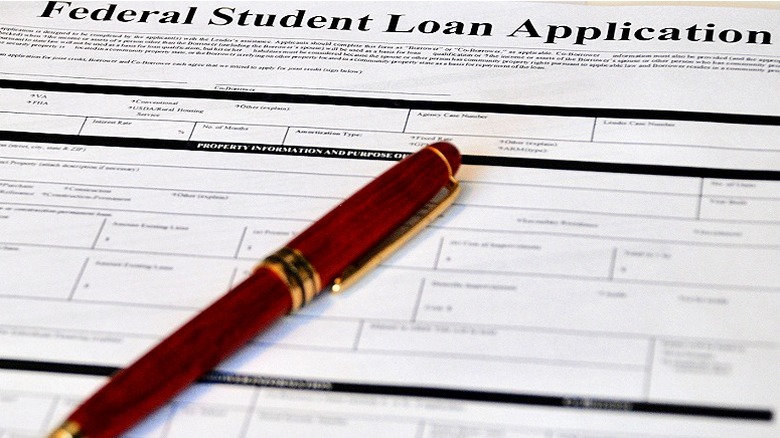The Best Method Of Calculating Your Student Loan Interest
Whether you already have student loan debt or you're trying to decide if you should take out loans for school, being able to calculate how much interest you'll ultimately pay for those loans is vital to understanding your future finances, including what might happen if you don't pay off your student loan. This can also be an important way to calculate if you want to take out student loans at all. Let's break down a simple way to calculate your loan interest so you can financially prepare yourself for student loans.
To break down exactly how much your student loan interest is, begin with your daily interest rate. Take your annual interest rate, let's say 6%, and divide it by the number of days in the year to end up with 0.00016%. Now, you can multiply your standing loan balance (or the balance you expect to take out) by your daily interest rate. Let's say you have $38,787 in student loans (or the average student loan debt amount in 2023 across all borrowers, according to Experian). Multiply this by your daily rate to find your interest accrues about $6.21 every day. You can then multiply this by the days in a month to find your monthly interest, which would be roughly $186.30.
Keep in mind this monthly interest amount doesn't account for the principle (aka the actual loan amount), and that most loan servicers prioritize paying off outstanding fees and interest before your payment is applied to the actual loan principal amount.
Understanding loan interest
For starters, it's important to realize that not all student loans will have the same interest rate. Plus, not all loans have the same kind of interest being applied, which is why it's especially important to understand different loan terms and options before agreeing to any student loan. Most federal loans rely on simple interest in which interest is accrued at the beginning of your ceiling cycle (which is usually every month) as we calculated above. However, some private loans can use variable and/or even compound interest for your loan terms. Variable interest means you might have either a higher or lower interest rate on your loan in the future. This could lead to potential balloon payments after a set amount of time, or it could mean you face higher interest rates upfront with your payments.
Compound interest is when your loan principal is accruing interest not just on the outstanding loan balance but also on any unpaid interest that's being accrued daily. This means your daily interest rate (like the one calculated above) is multiplied not just by your principal amount but by your principal amount plus the amount of interest accrued the previous day. Using our previous numbers that means you would multiply 0.00016% (daily rate) by $38,787 (your principal) plus $6.21 (the previous day's interest). Your previous day's interest amounts will compound in a month, which leaves the bank collecting a lot more money from you than a simple interest loan, and why you might think twice before aggressively paying off your student loans.
Federal student loan types
Another thing to understand about loans (especially if you're considering or already have Federal Direct Loans) is the difference between subsidized and unsubsidized student loans. Subsidized loans are typically for undergraduate students and are based on financial need (calculated by subtracting any loans and/or grants you might have received as well as your/your family's expected financial contribution from your total cost of attendance). One of the best things about subsidized loans is that the government actually helps to pay some of the interest on these loans by paying the interest while a student is enrolled (as well as during a six-month grace period after leaving school). Essentially, as a student, your subsidized loans don't accrue interest while you're still actively attending (at least half-time) or during any periods of deferment. Student loans are considered a type of good debt.
Unsubsidized loans, on the other hand, are available to both undergraduate and graduate students. Unlike with subsidized loans, students are responsible for the accrued interest on their loan starting the day the money is dispersed. These loans aren't based on financial need and also tend to have higher loan limits than subsidized loans, which can be especially beneficial for graduate students who might have higher tuition amounts. For instance, the total subsidized student loan limit for dependent students (who still have family financial help) is $31,000 compared to subsidized loans, which cap at $23,000. Financially independent students have an unsubsidized loan limit of $57,500 while the subsidized limit remains $23,000.


